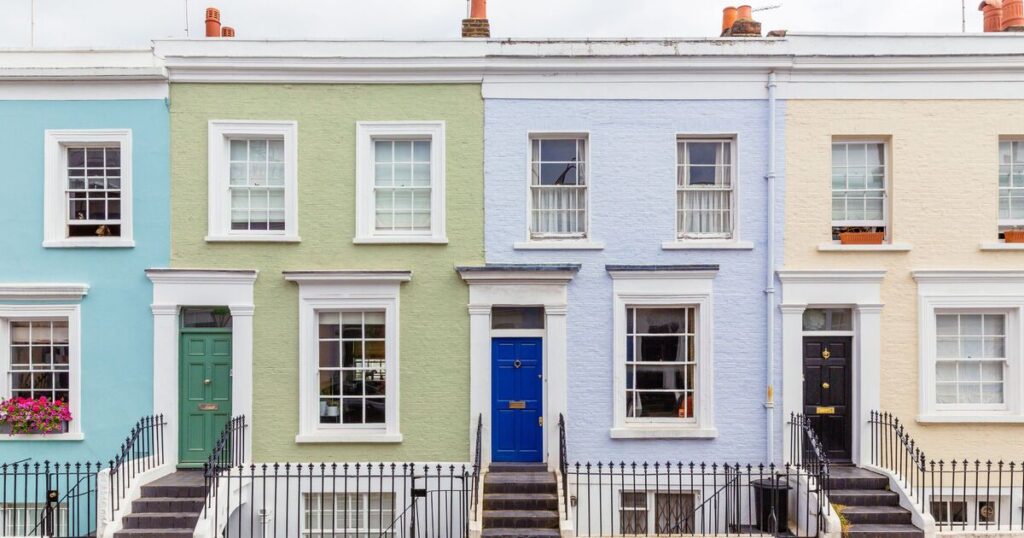
The average UK house price rose by 0.5% month-on-month in September, after a 0.1% monthly decline in August, Nationwide Building Society said.
Property values climbed by 2.2% annually in September, marginally higher than the 2.1% annual growth recorded the previous month. Throughout the UK, the average house price in September was £271,995, according to Nationwide. The building society’s chief economist Robert Gardner said: « Despite ongoing uncertainties in the global economy, underlying conditions for potential home buyers in the UK remain supportive. Providing the broader economic recovery is maintained, housing market activity is likely to strengthen gradually in the quarters ahead. »
Analyising performance across the UK, Northern Ireland maintained its position as the strongest performer by a wide margin, with annual house price growth of 9.6% in the third quarter of this year.
Wales experienced a modest uptick in annual house price growth to 3.0% in the third quarter, rising from 2.6% in the second quarter of this year, whilst growth in Scotland slowed to 2.9%, down from 4.5% in the previous quarter.
Mr Gardner continued: « England saw a further slowing in annual house price growth to 1.6%, from 2.5% in (the second quarter).
« Average prices in northern England (including the North East, North West, Yorkshire and the Humber, East Midlands and West Midlands) were up 3.4% year-on-year. »
He noted that annual house price growth in southern England, which includes the South West, Outer South East, Outer Metropolitan, London and East Anglia, was at 0.7%, with a « marked softening » in house price growth in the Outer Metropolitan and Outer South East areas.
Mr Gardner said: « Our most recent data by property type shows that semi-detached properties have seen the biggest percentage rise in prices over the last 12 months, with average prices up 3.4% year-on-year.
« Detached and terraced properties saw similar growth, at 2.5% and 2.4% respectively. However, flats saw a small year-on-year decline of 0.3%.
« Looking over the longer term, flats have seen noticeably weaker growth than other property types in recent years. For example, over the last 10 years, the price of a typical flat has increased by around 20%, less than half of the rise in the price of terraced houses over the same period. »
Alice Haine, a personal finance analyst at Bestinvest by Evelyn Partners, said: « While mortgage rates have eased over the past year, following five Bank of England interest rate cuts, the outlook for further reductions remains unclear.
« Average two and five-year fixed rate mortgages are still hovering around the 5% mark, which may be comforting for new buyers but broader economic pressures, including sticky inflation and high gilt yields, could limit further improvements. »
Jason Tebb, president of OnTheMarket, said: « Average prices are being held in check with buyers finding themselves in a strong position, which they are using to negotiate on price. »
Tomer Aboody, director of specialist lender MT Finance, added: « We are seeing that despite plenty of negativity surrounding current market conditions, buyers are still transacting, although in smaller numbers than historically. Due to less demand, price growth is minimal but still positive. »
Iain McKenzie, chief executive of the Guild of Property Professionals, advised: « Buyers motivated to complete before Christmas should act swiftly, as the window is narrowing.
« Looking ahead, sentiment will hinge on the interplay between inflation, monetary policy, and potential housing tax reforms in the autumn Budget. »
Here are average house prices in the third quarter of this year followed by the annual increase, according to Nationwide Building Society:
- Northern Ireland, £215,122, 9.6%.
- North East, £169,216, 5.1%.
- Yorkshire and the Humber, £214,359, 3.8%.
- North West, £222,664, 3.2%.
- West Midlands, £250,951, 3.0%.
- Wales, £213,359, 3.0%.
- Scotland, £189,863, 2.9%.
- East Midlands, £238,702, 2.7%.
- East Anglia, £273,945, 1.1%.
The Outer Metropolitan area, which includes St Albans, Stevenage, Watford, Luton, Maidstone, Reading, Rochford, Rushmoor, Sevenoaks, Slough, Southend-on-Sea, Elmbridge, Epsom and Ewell, Guildford, Mole Valley, Reigate & Banstead, Runnymede, Spelthorne, Waverley, Woking, Tunbridge Wells, Windsor and Maidenhead, Wokingham, saw an average property price of £428,405, a 1.0% increase.
In the South West, the average property price was £306,163, marking a 0.9% rise.
London’s average property price stood at £527,694, a 0.6% increase.
The Outer South East region, including Ashford, Basingstoke and Deane, Bedford, Braintree, Brighton and Hove, Canterbury, Colchester, Dover, Hastings, Lewes, Fareham, Isle of Wight, Maldon, Milton Keynes, New Forest, Oxford, Portsmouth, Southampton, Swale, Tendring, Thanet, Uttlesford, Winchester, Worthing, saw an average property price of £337,201, a 0.3% increase.
